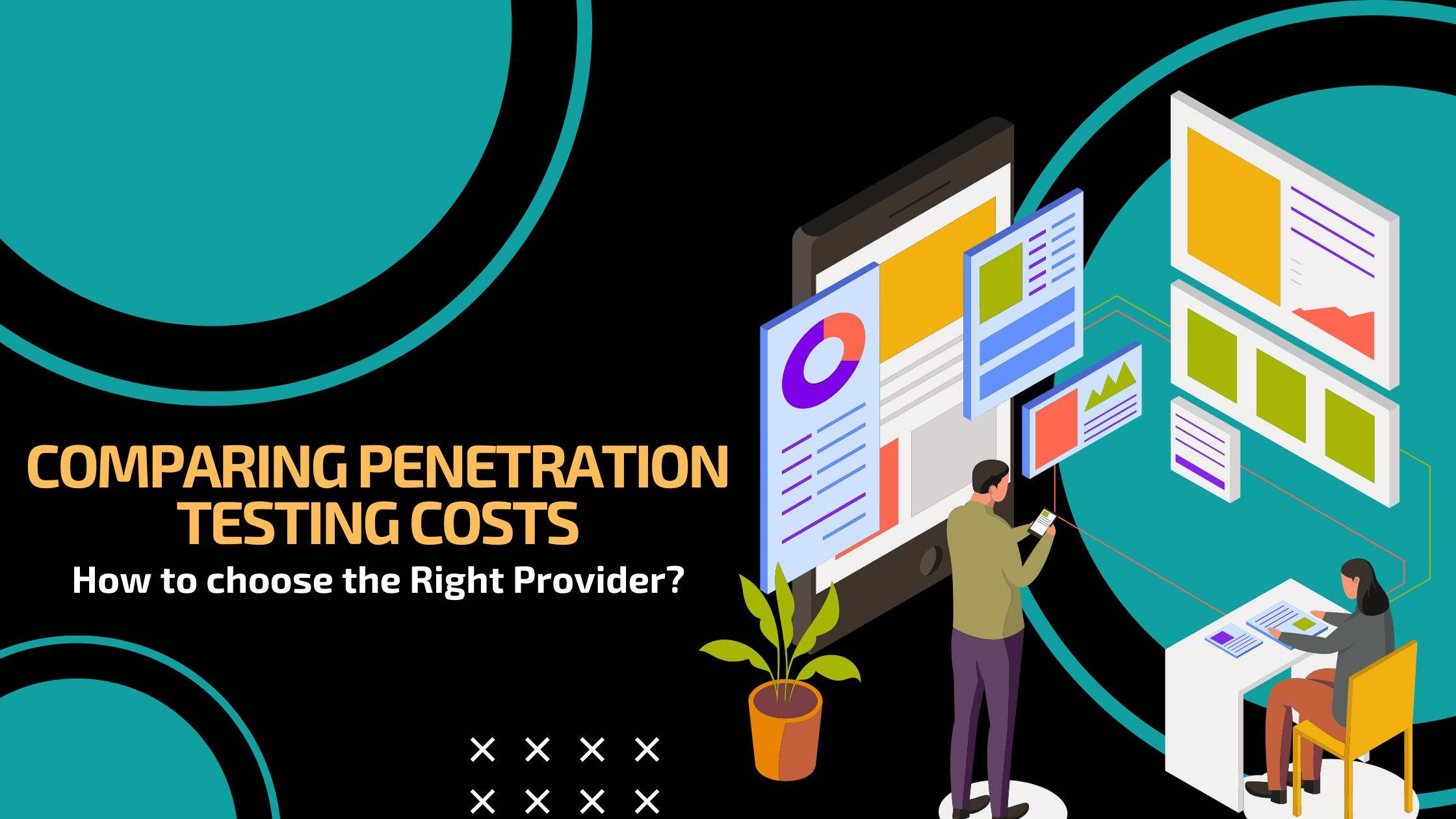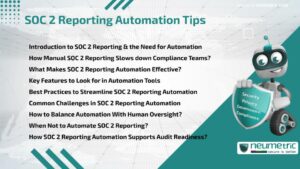Table of Contents
ToggleComparing Penetration Testing Costs: How to Choose the Right Provider
Introduction
In today’s digital landscape, where organisations rely heavily on technology & interconnected systems, the importance of ensuring robust cybersecurity measures cannot be overstated. As cyber threats continue to evolve in sophistication & frequency, it has become essential for businesses to proactively identify vulnerabilities within their networks & systems. This is where penetration testing emerges as a critical practice to fortify defences & safeguard sensitive data.
Penetration testing, also known as ethical hacking, is a proactive security assessment technique aimed at identifying vulnerabilities within an organisation’s digital infrastructure. Its importance lies in the ability to evaluate the effectiveness of security controls, assess potential breaches & provide recommendations for remediation. By simulating real-world attack scenarios, penetration testing helps organisations identify weaknesses & enhance their overall security.
Choosing the right penetration testing provider is crucial for the success of the engagement. Their expertise, methodologies & approach play a pivotal role in uncovering vulnerabilities & providing actionable recommendations. A competent provider will possess the necessary qualifications, experience & industry knowledge to deliver effective testing, ensuring that your organisation’s security is robust & aligned with industry best practices.
This Journal aims to provide a comprehensive guide to comparing penetration testing costs & guiding the selection process. It will delve into the different types of penetration testing, the factors to consider when choosing a provider, the various engagement models available & the cost components involved. By understanding the costs & evaluating them alongside other critical factors, organisations can make an informed decision when selecting a penetration testing provider.
Understanding Penetration Testing
Penetration testing involves the simulation of attacks to identify vulnerabilities in an organisation’s systems, networks & applications. The primary objectives are to evaluate the effectiveness of existing security controls, assess the potential impact of breaches & provide recommendations for remediation. This proactive approach allows organisations to identify & address vulnerabilities before malicious actors can exploit them, strengthening their security posture.
It encompasses various types, including external, internal & web application testing. External penetration testing evaluates the security of externally accessible systems such as network perimeter defence & web applications. Internal penetration testing assesses the effectiveness of internal security controls & configurations. Web application testing focuses specifically on vulnerabilities within web-based applications. Utilising these different types provides a comprehensive evaluation of an organisation’s security from multiple angles.
It offers several benefits, including identifying vulnerabilities that could be exploited by attackers. By proactively finding & addressing weaknesses, organisations can enhance their security posture & prevent potential breaches. Penetration testing also helps in evaluating the effectiveness of existing security controls, fine-tuning defence strategies & allocating resources efficiently. This iterative process leads to continuous improvement, reducing the risk of successful cyber attacks & safeguarding valuable assets & data.
Factors to Consider When Choosing a Penetration Testing Provider
When selecting a penetration testing provider, several crucial factors must be taken into account to ensure a successful engagement. These factors range from the provider’s expertise & certifications to their methodologies & compatibility with industry requirements. Few factors to consider are as follows:
- Expertise & experience of the provider: Selecting a penetration testing provider with extensive expertise & experience is crucial for ensuring the effectiveness of the testing process. Evaluate the provider’s track record, inquire about their team’s qualifications & assess their experience in conducting penetration tests. An experienced provider will possess in-depth knowledge of various technologies, attack vectors & emerging threats, allowing them to accurately identify vulnerabilities & provide actionable recommendations.
- Certifications & accreditations: Verify that the penetration testing provider holds relevant certifications & accreditations. Certifications such as Certified Ethical Hacker [CEH], Offensive Security Certified Professional [OSCP] or Certified Information Systems Security Professional [CISSP] demonstrate their commitment to industry best practices. Accreditation from reputable organisations adds an extra layer of assurance that the provider follows rigorous standards in their testing methodologies & ethical conduct.
- Reputation & customer reviews: Research the provider’s reputation & customer reviews to gain insights into their professionalism, reliability & customer satisfaction. Look for testimonials, case studies or references from clients who have previously engaged in their services. This information will help you assess the provider’s track record & determine if they have successfully met the needs of organisations similar to yours.
- Methodologies & resting approach: Understand the penetration testing provider’s methodologies & testing approach to ensure they align with your requirements. Inquire about their testing tools, techniques & the depth of analysis they perform. A comprehensive approach that includes manual & automated testing, as well as the ability to simulate sophisticated attack scenarios, is desirable for a thorough assessment of your organisation’s security posture.
- Compatibility with your industry & compliance requirements: Consider the provider’s familiarity & compatibility with your industry-specific challenges & compliance requirements. Different sectors have unique security concerns & regulatory obligations. Ensure the provider has experience working within your industry & understands the specific compliance standards, such as Payment Card Industry Data Security Standard [PCI DSS], Health Insurance Portability & Accountability Act [HIPAA] or General Data Protection Regulation [GDPR], to ensure they can address your organisation’s specific needs effectively.
- Communication & reporting capabilities: Effective communication & reporting are vital throughout the penetration testing process. Assess the provider’s communication channels, response times & ability to provide clear & actionable reports. Understand their reporting format, including the level of detail, the technical language used & the comprehensiveness of findings. Clear & concise reporting will facilitate your understanding of vulnerabilities & aid in prioritising remediation efforts.
Types of Penetration Testing Engagement Models
- Fixed-price model: In a fixed-price model, the penetration testing provider offers a predetermined price for a specific scope of work. This model is beneficial when the project requirements & scope are well-defined & unlikely to change. It provides cost certainty, allowing organisations to budget accordingly & ensures transparency in terms of deliverables & costs.
- Time & materials model: The time & materials model involves billing based on the actual time spent & resources utilised during the engagement. It offers flexibility as the project scope & duration may evolve. This model allows for adjustments & additional testing as needed, though costs can be less predictable.
- Subscription-based model: The subscription-based model offers ongoing penetration testing services for a set period, ensuring continuous monitoring & timely identification of vulnerabilities. It provides a predictable cost structure & is ideal for organisations that require regular assessments to maintain a proactive security posture.
- Hybrid models & customised pricing structures: In some cases, penetration testing providers may offer hybrid models or customised pricing structures tailored to the specific needs of the organisation. These models combine elements of fixed-price, time & materials or subscription-based models to meet unique requirements. Hybrid models provide flexibility in terms of scoping, testing duration & deliverables, allowing organisations to optimise their investment & address specific security concerns effectively.
When considering engagement models, organisations should assess their budget, project requirements & desired level of flexibility. Each model has its advantages & considerations & selecting the most suitable model ensures a successful & cost-effective penetration testing engagement.
Cost Components of Penetration Testing
Penetration testing encompasses various cost components that organisations should consider when evaluating the overall investment. Understanding these cost components helps in gaining transparency & making an informed decision. The key cost components of penetration testing include:
- Pre-engagement activities: This phase involves scoping the engagement, gathering information about the systems & networks to be tested & understanding the specific objectives. The time & effort invested by the provider during this stage contribute to the overall cost of the engagement.
- Test execution & provider effort: The core of penetration testing lies in the actual testing process where the provider simulates attacks to identify vulnerabilities. The cost is influenced by the complexity & size of the environment being tested, as well as the expertise & effort required from the provider’s team to conduct comprehensive & thorough assessments.
- Reporting & documentation expenses: After the testing phase, the provider compiles the findings, analysis & recommendations into a comprehensive report. This report serves as a valuable resource for understanding the identified vulnerabilities & developing appropriate mitigation strategies. The effort & time invested in producing high-quality reports contribute to the overall cost.
- Post-engagement support & remediation costs: Addressing the vulnerabilities identified during the penetration testing process requires additional resources. Organisations may need to allocate resources for implementing remediation measures, which include patching systems, updating configurations & enhancing security controls. The cost of post-engagement support & remediation activities should be considered as part of the overall investment.
Comparing Penetration Testing Costs
When it comes to comparing penetration testing costs, there are several key factors to consider to make an informed decision. Here are some steps to follow:
- Requesting detailed quotes: Reach out to different penetration testing providers & request detailed quotes for their services. These quotes should outline the scope of the testing, the deliverables you can expect & the associated costs. By obtaining multiple quotes, you can gain a comprehensive understanding of the market rates & offerings.
- Evaluating scope & deliverables: Carefully review the scope of work & deliverables that are included in each provider’s pricing. Assess whether the proposed testing aligns with your organisation’s specific requirements. Consider the depth of the assessments, the number of systems or applications to be tested & the inclusion of any additional services such as retesting or post-engagement support.
- Assessing depth & rigour in testing methodologies: Evaluate the methodologies employed by each provider & assess the level of depth & rigour in their testing approach. Look for providers that follow recognized standards & best practices, such as those outlined by organisations like Open Web Application Security Project [OWASP] & National Institute of Standards & Technology [NIST]. A comprehensive & robust testing methodology ensures a thorough assessment of your systems & helps uncover vulnerabilities that could be missed with a less rigorous approach.
- Comparing pricing structure & value for money: Compare the pricing structures of different providers & assess the value for money they offer. Take into account the cost components, such as pre-engagement activities, testing efforts, reporting & post-engagement support. Consider the overall quality of the services provided, including the expertise & experience of the team, the reputation of the provider & the level of customer support offered. It’s important to strike a balance between cost & quality to ensure that you receive a thorough & effective penetration testing service.
Additional Considerations Beyond Cost
- Quality of deliverables & reporting: Assess the quality of deliverables & reporting provided by the provider. Clear, concise & actionable reports are essential for understanding vulnerabilities & implementing effective remediation measures.
- Level of customer support & post-engagement assistance: Consider the level of customer support & post-engagement assistance offered by the provider. Prompt response times, ongoing guidance & assistance with vulnerability remediation contribute to a successful engagement.
- Reputation & track record: Evaluate the provider’s reputation & track record. Consider their history of successful engagements & their ability to work with organisations similar to yours. A trusted & reliable provider instils confidence in their services.
- Trustworthiness & security of data handling: Ensure the provider follows strict data handling & confidentiality practices. Discuss their data protection policies, encryption measures & compliance with relevant regulations to safeguard your sensitive information.
- Compatibility with your organisation’s culture & values: Consider the provider’s compatibility with your organisation’s culture & values. Effective collaboration & alignment of objectives are essential for a successful engagement.
Making the Right Choice
Once you have gathered information about potential penetration testing providers, it’s time to analyse the data & evaluate costs. Look closely at the pricing structures & compare them across different providers. Consider the breakdown of costs, including pre-engagement activities, test execution, reporting & post-engagement support. By assessing the costs associated with each provider, you can determine if they align with your budgetary constraints.
Expertise & experience are key factors to prioritise when choosing a penetration testing provider. Evaluate their track record, industry experience & success stories. Look for providers with a strong reputation & a history of conducting effective assessments within your specific industry. Assess their knowledge of the latest vulnerabilities, attack techniques & security best practices. A provider with extensive expertise & experience is better equipped to uncover potential risks & recommend appropriate mitigation strategies.
While cost is an important consideration, it should not be the sole determining factor. Assess the overall value offered by each provider. Consider factors such as the comprehensiveness of their testing methodologies, the depth of their analysis & the quality of their deliverables. Evaluate how well their services align with your organisation’s specific security needs & goals. A provider that offers comprehensive assessments, actionable recommendations & ongoing support can provide long-term value & contribute to your security posture.
Based on your analysis of costs, expertise, experience & overall value, it’s time to make an informed decision. Consider all the factors that are crucial to your organisation’s security & choose the penetration testing provider that best aligns with your requirements. It’s essential to communicate your expectations clearly & establish a strong partnership with the chosen provider. By making a well-informed decision, you can set the foundation for a successful & impactful penetration testing engagement.
Conclusion
In this Journal, we explored the importance of choosing the right penetration testing provider & the factors to consider in the selection process. We discussed the significance of analysing costs, prioritising expertise & experience & considering the overall value offered by each provider. Selecting the right penetration testing provider is crucial for identifying vulnerabilities, strengthening security defences & protecting your organisation from potential cyber threats. Their expertise & experience can significantly impact the success & effectiveness of the engagement.
While cost is an important consideration, it should not overshadow other crucial factors such as expertise, experience, methodologies & overall value. It’s essential to strike a balance between cost-effectiveness & the ability to meet your organisation’s security needs.
To choose the right penetration testing provider, conduct thorough research, evaluate costs, prioritise expertise, consider the overall value & make an informed decision. By following these guidelines, you can ensure a successful engagement & enhance your organisation’s security posture.
By following these guidelines, organisations can make informed decisions that not only consider cost but also align with their specific security needs & objectives. Choosing the right penetration testing provider sets the foundation for a robust security strategy & ensures the ongoing protection of valuable assets & sensitive data.
FAQs
How do I choose a penetration testing provider?
To choose a penetration testing provider, consider their expertise & experience, certifications & accreditations, reputation & customer reviews, methodologies & testing approach, compatibility with your industry & compliance requirements & their communication & reporting capabilities.
How to price penetration testing services?
Pricing penetration testing services typically involves considering factors such as the scope & complexity of the testing, the time & effort required, the expertise & experience of the provider, the level of reporting & documentation & any additional services or post-engagement support required.
How much does pentesting cost?
The cost of penetration testing in India can vary depending on factors such as the scope of testing, the complexity of the systems being tested, the level of expertise required & the reputation of the provider. It is advisable to request quotes from multiple providers to get a better understanding of the specific costs involved.
Are pen testers in high demand?
Yes, pen testers are in high demand. With the increasing frequency & sophistication of cyber threats, organisations recognise the importance of identifying & addressing vulnerabilities in their systems. Pen testers play a crucial role in helping companies enhance their security measures, making their skills & expertise highly sought after.





